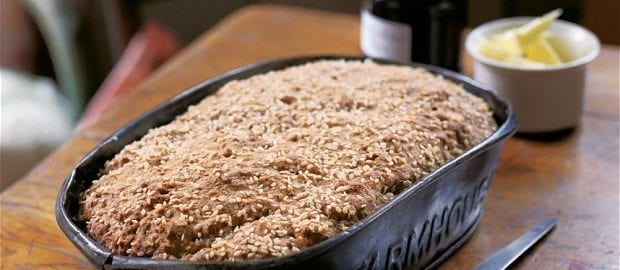Food Safety in Bakeries
In the following post I will outline and explain the main dangers to food safety within a Bakery setting.
Bakeries tend to be low risk in terms of food safety as most ingredients used do not support the growth of food poisoning bacteria. However, where eggs, butter and milk are involved there is potential for food poisoning bacteria to grow if these ingredients are not stored or delivered at the correct temperatures.
The main 3 concerns to food safety in a bakery are Physical Contamination, Inadequate Allergen Control and Acrylamide.
Physical Contamination
Physical contamination occurs when an actual object (e.g. hair, a piece or broken equipment or jewellery) enters the product during the production process. For example, while mixing dough a hair falls from the baker’s head and into the dough, the dough is then made into bread, the bread is then sold to and eaten by a customer who discovered a hair in their bread.
Bakeries can implement a number of controls to help minimise the risk of physical contamination:
• Use of protective clothing in production areas
• Banning Bakers from wearing jewellery in production areas
• Ensuring Bakers wear minimal make up (no fake eyelashes & no fake nails)
• Removing/ limiting glass, ceramic and other easily broken materials from production areas
• Regular equipment checks and maintenance to ensure everything is intact.
• Metal detection check on finished products before they are delivered or sold.
Allergen Control
There are 14 main allergens; gluten, eggs, milk, lupin, sesame, soya, peanuts, nuts, sulphites, mustard, celery, fish, crustaceans, and molluscs. It is required by law to declare and highlight these as present ingredients on any food labelling.
Where a bakery is producing products that are allergen free alongside those containing allergens, they must do all that is possible to minimise the risk of allergen contamination of non-allergenic product.
For example:
A bakery may bake bread with a sesame seed topping, sesame seeds are one of the 14 main allergens. During storage and when using sesame seeds bakers must ensure they are kept contained in one area to minimise the allergen contamination. If the areas contaminated are also used to product products that do not contain sesame seeds, they must be cleaned vigorously after the use of sesame seed (to remove the physical seeds and any traces that remain). This cleaning process would also require validation in the form of allergen swabbing and testing by an accredited laboratory.
Alibi labelling may also be an option, e.g. Sesame are produced on the same line and therefore, this product may contain sesame.
Acrylamide
Acrylamide is a chemical that naturally forms on starchy products when cooked at high temperatures (120°C or above), e.g. the crisp exterior of bread. Acrylamide is a carcinogenic (cancer causing) substance.
COMMISSION REGULATION (EU) 2017/2158 sets out a benchmark for safe acrylamide levels in food. Bakeries are required to send products to external accredited laboratories to ensure products meet these benchmarks for safe acrylamide levels.
Where these benchmarks are exceeded Bakeries must increase mitigating factors to reduce acrylamide levels in line with the benchmarks.


